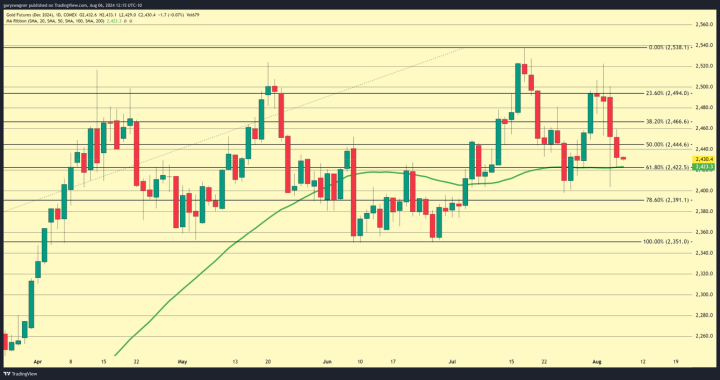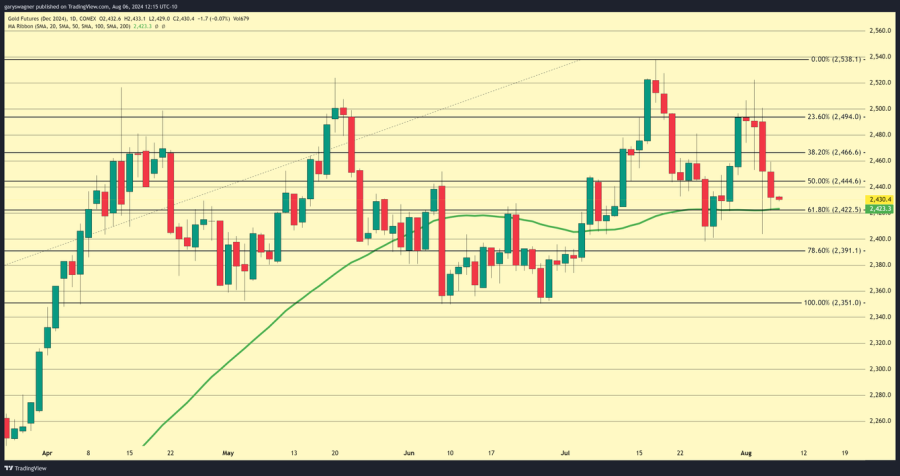
Gold Market Experiences Fourth Consecutive Day of Decline

The gold market has been experiencing a turbulent period in August, with prices declining for the fourth consecutive trading session. This downward trend began on August 1, when the December gold contract decline by the fractional amount of $2.50, after opening at $2,493.40. As of the latest report, the most active December contract has fallen to $2,432.10, representing a significant drop of $20. Gold is currently trading in Australia down an additional -$1.50, taking December gold to $2429.80
The recent decline in gold prices can be attributed to several factors, including concerns about a potential U.S. economic recession and fluctuations in Treasury yields. The latest jobs report revealed an increase in the unemployment rate to 4.3%, its highest level since October 2021, fueling worries about the economy's health.
U.S. Treasury yields have also played a role in gold's recent performance. The two-year note yield rose by 7.9 basis points to 4.016%, while the 10-year Treasury note yield increased by 11 basis points to 3.908%. These changes in bond yields, coupled with a slight strengthening of the U.S. dollar index (up 0.15% to 102.685), have contributed to the downward pressure on gold prices.
The economic uncertainty has led to increased speculation about the Federal Reserve's upcoming monetary policy decisions. The probability of a more aggressive rate cut at the September Federal Open Market Committee (FOMC) meeting has risen dramatically. Just one month ago, the likelihood of a 0.5% rate cut was only 5.5%. However, this probability surged to 85% yesterday before settling at 71.5% today.
According to the CME's FedWatch tool, which analyzes interest rate futures to predict monetary policy changes, there is now a 100% certainty of a rate cut next month. The tool suggests a 71.5% chance of a 0.5% cut and a 28.5% probability of a more modest 0.25% reduction.
These market dynamics highlight the complex interplay between economic indicators, monetary policy expectations, and precious metal prices. As investors and traders navigate this uncertain landscape, they must consider a range of factors, including employment data, Treasury yields, dollar strength, and potential Federal Reserve actions.
The gold market's recent volatility serves as a reminder of the metal's sensitivity to economic conditions and policy shifts. As the September FOMC meeting approaches, market participants will be closely monitoring further economic data and policy signals to gauge the future direction of gold prices and the broader financial markets.
For those who would like more information simply click on one of the links below:
Information, Track Record, Trading system, Testimonials, Free trial
Wishing you as always good trading,
Kitco Media
Gary Wagner
Tim Moseley
